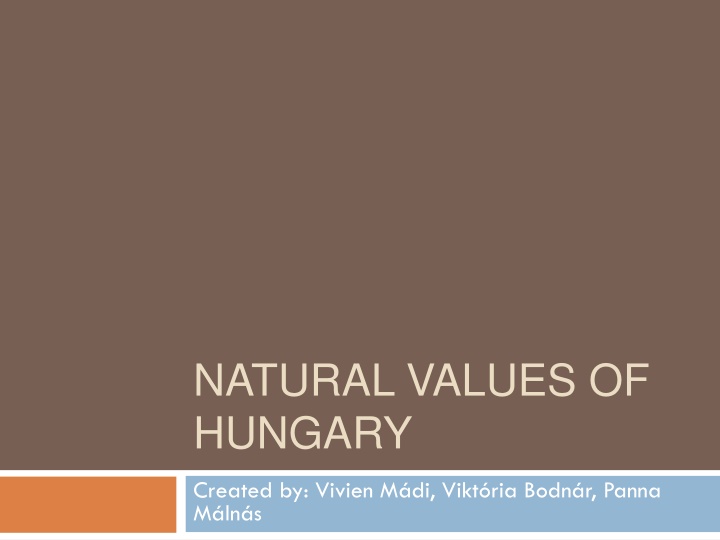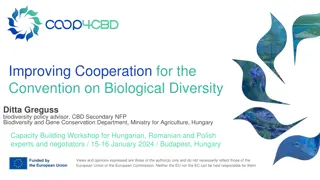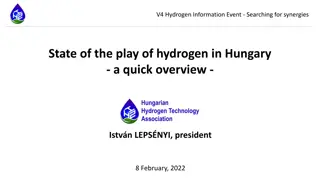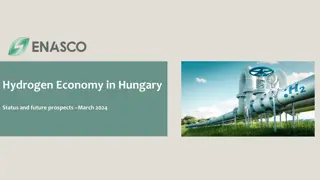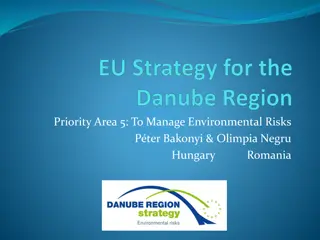NATURAL VALUES OF HUNGARY
Hungary is home to stunning natural attractions, including Aggtelek National Park with its impressive stalactite caves and Duna-Ipoly National Park renowned for its diverse landscapes. Lake Hévíz stands out as Europe's largest medicinal hot water lake, offering a tranquil retreat surrounded by lush forests. Discover the rich biodiversity and captivating beauty of Hungary's natural treasures.
Download Presentation

Please find below an Image/Link to download the presentation.
The content on the website is provided AS IS for your information and personal use only. It may not be sold, licensed, or shared on other websites without obtaining consent from the author.If you encounter any issues during the download, it is possible that the publisher has removed the file from their server.
You are allowed to download the files provided on this website for personal or commercial use, subject to the condition that they are used lawfully. All files are the property of their respective owners.
The content on the website is provided AS IS for your information and personal use only. It may not be sold, licensed, or shared on other websites without obtaining consent from the author.
E N D
Presentation Transcript
NATURAL VALUES OF HUNGARY Created by: Vivien M di, Vikt ria Bodn r, Panna M ln s
Aggtelek National Park Greatiststalactitecaveof Hungary. Several protected animals and plant species can be found here. The National Park covers an area of 20170 hectares. There are 280 small and large caves in the national park area.
Aggtelek National Park The caves are also extremely diverse: Thereareactivestreamsamongthem Verticaland cavernshafts caves
Aggtelek National Park About two-thirds of the internationally recorded basic types of carbonate precipitation can be observed in some caves: suspended and standing stalactites, stalactite columns, stalactite flags.
Duna-Ipoly National Park It is one of the richest national parks in Hungary. It was established in 1997, connected to the former Pilis and B rzs ny Landscape Protection Areas of the affected section of Ipoly. Many species of animals and plants live here in Hungary. Several programs have been launched to save rare, extinct species.
Duna-Ipoly National Park Three large landscape units: the meeting point of river valleys, mountains and plains. The 300- 350 springs of the mountain range feed streams. The highest elevation, with a height of 757 meters at Pilis, is the highest elevation of the entire Dunazug mountain range.
Lake Hvz The most famous attraction of the H v zLake is the H v zLake or the H v zSpaLake. With its 4.44 hectares and 50 hectares of forests, the lake is Europe's largest medicinal hot water lake.
Lake Hvz The unique natural environment of the lake is made especially by the medicinal lake surrounded by the park, the humid layer floating above the water surface and the Indian red water lilies floating on the surface of the lake. The temperature of the water has a calming effect on bathers and patients, because this temperature value is considered to be indifferent to the temperature of the person.
Lake Hvz In summer the water temperature is 33-35 C, but on very warm days it can reach 36-38 C. In autumn and winter temperatures are lower, around 24-26.
Lake Tisza It is the second largest lake and the largest artificial lake in Hungary on the Tisza, in the Northern Great Plain. Its area is 127km, where open water surfaces, islands, backwaters and shallow canals change mosaically. It has a length of 27km, an average depth of 1.3m, and its lowest point is 17m, with 43km of islands.
Lake Tisza In 1973, the Kisk rePower Plant was built with the dam to control the Tisza floods and to improve the water supply of the Great Plain. It was completed in the 1990s. The lake has developed its ecology by today, and it also has a bird sanctuary. Since 1999 it has been a UNESCO World Heritage Site as a demonstration area of the Hortob gyNational Park.
